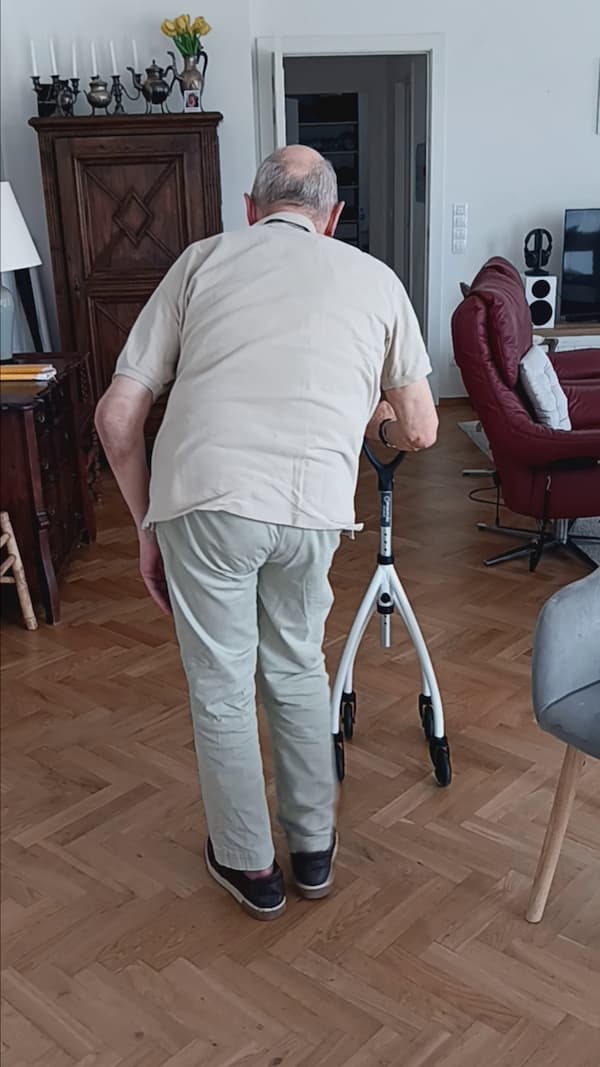
Home – Wheeleo Users –
Parkinson’s disease is a neurological disorder. It is accompanied by motor and non-motor symptoms 1 :
Motor symptoms :
Non-motor symptoms :
Motor disorders are characterized by ON and OFF phases.
Parkinson’s patients often have a very high step frequency. He literally “tramples”. We also call this “festination”. The high frequency is accompanied by a short step length. This stomping may appear abruptly as the patient passes through a door, turns back, is distracted or frightened. As a result, the person may be thrown forward as if the body were still moving faster than the feet.
Coordination or cognitive disorders can make it difficult to use a mobility aid.
With the passage of time, the joints of a Parkinson’s disease patient stiffen. It is not uncommon to observe knee and hip flessum, forward tilt of the trunk, stiffness of the neck and stiffness of the shoulders. Combating this stiffening is a major objective of physiotherapy management.
At an advanced stage, the Parkinsonian may present a retropulsion. This retropulsion will be the major cause of difficulty in walking, difficulty in standing up, and falls. At this stage, the use of certain mobility aids will not sufficiently correct the problem. The patient will then be dependent and will hardly be able to move around on his or her own.
In the early stages of the disease, the use of a walking aid is not necessary.
Next comes the use of a simple cane, often to reassure rather than to help.
In the more advanced stages of the disease, coordination with a conventional cane is often impaired. Given the high step frequency, coordination is almost impossible. The cane is more often in the air than supported. A conventional cane can even make walking more difficult.
The use of a 4-wheel rollator overcomes the coordination problems associated with high step frequency. It provides constant support on the ground and acts as a “shield” for people you may pass (protection). It naturally leads to smoother walking.
Nevertheless, the rollator is bulky, unwieldy, difficult to maneuver and requires both hands. Excellent for straight-line outdoor use, less so for indoor use.
Indoors, on a smooth floor, the Wheeleo®️ provides a much more suitable aid for Parkinson’s suffer ers:
At a very advanced stage (or in the off phase), Parkinson’s sufferers become dependent on their mobility aids to help them stop. He is carried away by his body. The use of a rolling aid is no longer appropriate. Only walking frames will, for a time, limit imbalances.
When falling backwards, no walking aid can really prevent the fall.
Wheeleo®️ is an integral part of the mobility assistance package. For Parkinson’s patients, it’s somewhere between a cane and a 4-wheel walker. It’s an intermediate step between a cane that gives too little help and a rollator that gives too much.
reference :
Please fill in this short form so that we can contact you to arrange a test.